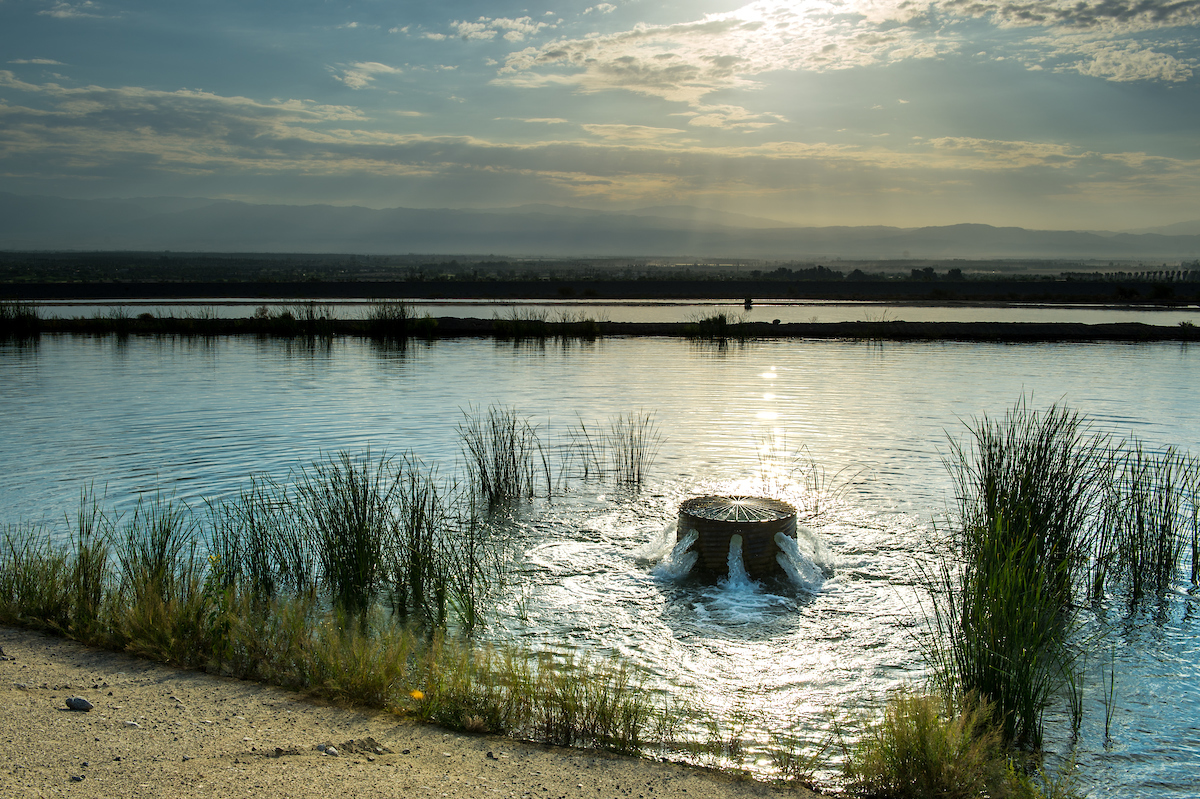A groundwater replenishment facility in Coachella, California. DWR/2014
SACRAMENTO, Calif. – An updated analysis of California’s water resources shows that investment, innovation, and infrastructure will be necessary to achieve the state’s goal of sustainable groundwater management.
The Department of Water Resource (DWR) today released the final Water Available for Replenishment (WAFR) report, which shows that water available for aquifer recharge may be limited in many regions, except in years of high precipitation. Developed with extensive stakeholder involvement, the report provides an estimate of the amount of water available to replenish groundwater basins to help inform development of local groundwater sustainability plans for critically overdrafted basins by January 2020.
“The WAFR report makes it abundantly clear that a diversified water resources portfolio is needed at the local, regional and state levels,” DWR Director Karla Nemeth said. “If California is to simultaneously bring sustainability to its groundwater basins, cope with climate change, and meet future demands, water managers must embrace a comprehensive, innovative approach.”
DWR estimates that 1.5 million acre-feet (MAF) of water may be available to replenish groundwater basins in an average year. With additional investments in programs such as water storage, conservation, recycling, stormwater capture, desalination, and conveyance improvements, more water could be available for replenishment in the future.
Water deliveries from the State Water Project and the federal Central Valley Project have reduced groundwater overdraft in many basins in the state; however, average deliveries have declined in recent years due to drought and regulatory requirements to protect water quality and critical species in the Sacramento-San Joaquin Delta and tributaries. Climate change is expected to further exacerbate these challenges. The WAFR report shows that constructing additional storage north and south of the Delta and improving Delta conveyance infrastructure as proposed in the California WaterFix project would limit the decline of water project deliveries and provide a more reliable supply of surface water for replenishment and other purposes.
The WAFR report analyzes water supply, demand, and runoff in 10 regions of the state to estimate how much surface water could be available to replenish groundwater basins. It provides a visual depiction of supply and demand in each region, as well as a range of potential water available for replenishment estimates.
The Sustainable Groundwater Management Act directs DWR to prepare the WAFR report to help newly formed local groundwater sustainability agencies develop sustainability plans for critically overdrafted basins by January 2020.
The final report incorporates public comments submitted in response to the draft report published last year.
Contacts:
Lauren Bisnett, Information Officer
(916) 653-7564 | Lauren.Bisnett@water.ca.gov
